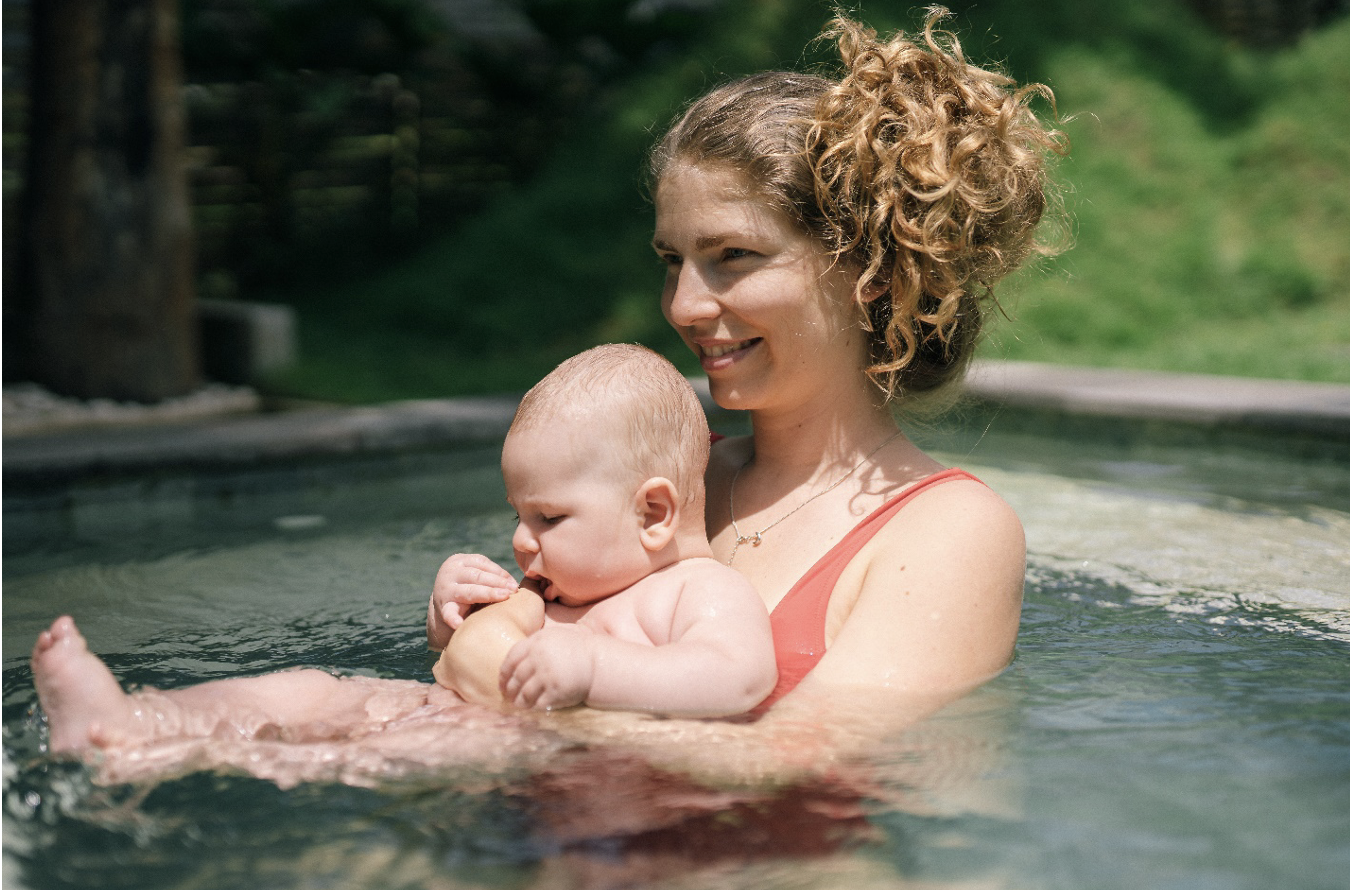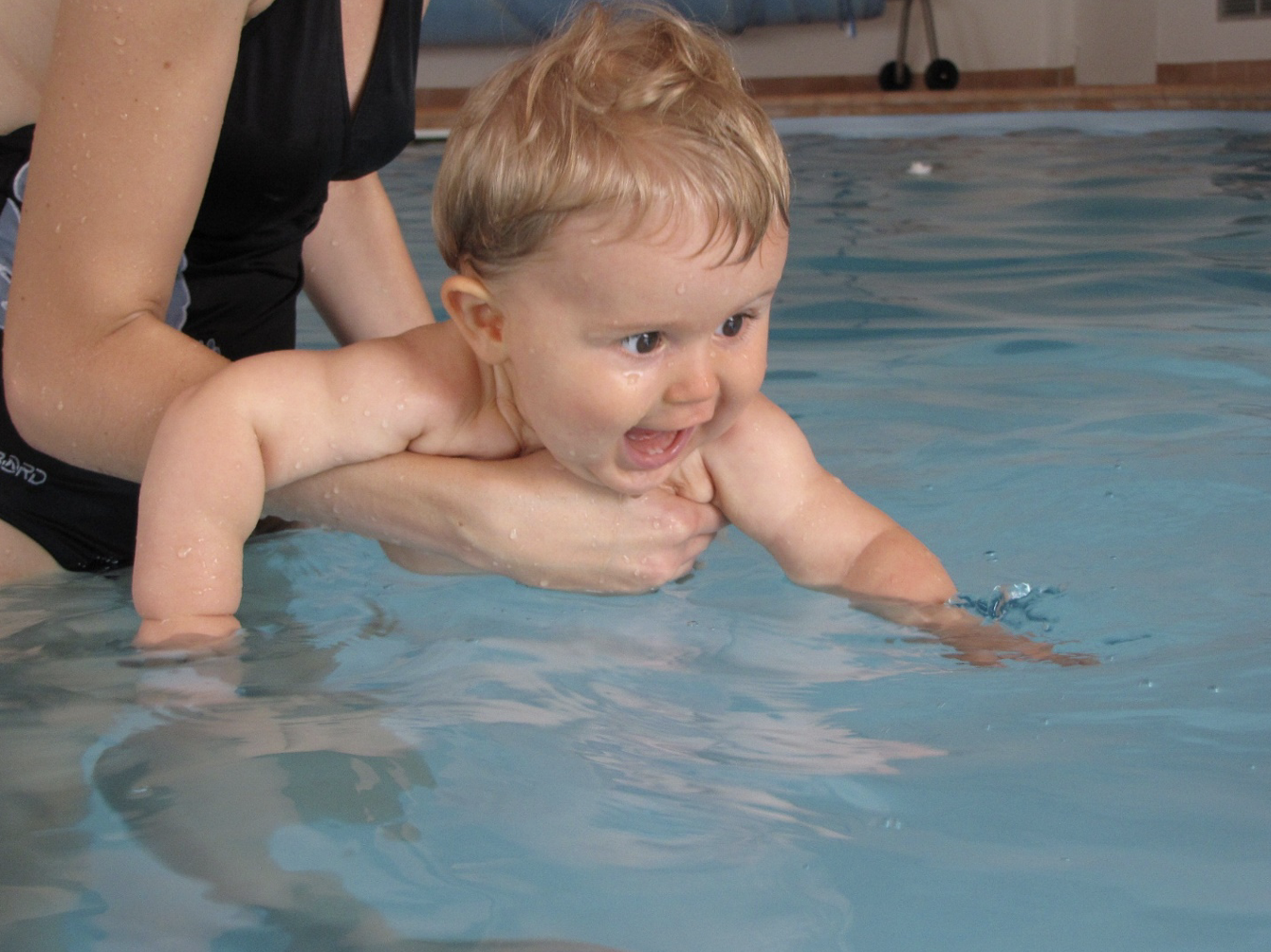How to Teach Your Baby to Swim at 6-12 Months Old | Woombie

Teaching your baby how to swim at an early age can save their lives. Since pool water has a similar environment to your womb, they developed this instinctive skill to swim. But unfortunately, babies can lose this natural gift if parents don't allow them to relearn it.
Swimming with your infant is a great bonding experience. Although the idea of your newborn being in water can be scary, it encourages them to be comfortable in the pool.
Letting your baby swim at 6-12 months old allows them to develop their motor skills. Since they have limited movements on land, they can't move as freely as when they're in the water. This experience allows your baby to improve their reflexes and movements.
Playtime is how babies learn about themselves and their surroundings, so include swimming into their weekly routine. Not only will you protect them against drowning, but it's also a great way to grow their self-confidence.
Here are 5 practical tips for teaching your baby how to swim.
How to teach your baby to swim (6-12 months old)
You can teach your baby how to swim as young as 6 months. But if you have a heated pool, you can let them in at 2 months old for only 10 minutes. It's essential to wait until their umbilical cord heals properly to avoid infection.
When you go for a dip in the pool with your tot, make sure they're wearing a swim nappy that is a sung fit in case they poop. You don't want them to use diapers because it can cause waterborne disease outbreaks.
Babies don't associate water with fear. But they can develop a fear of water if you don't introduce them to a pool early. So here are some tips on how to teach your babies how to swim at 6-12 months old:
Develop confidence
Babies learn by imitating their parents or caregivers. So if you show them you're afraid, they will also be scared. However, if you exhibit that you're comfortable in the water, they will copy how you feel as well. Thus, overcoming your fears first is important before teaching your baby how to swim.
Spend some time in the water first before letting your baby join you. Show them that water isn't something to be scared of. Do some basic swim strokes like kicking your feet and swimming from one end to the other to build your confidence. Use positive self-talk or affirmations to divert your attention away from your anxieties.
Once you develop your confidence, it's time to bring your baby into the water with you. Here's what to do:
- Let your baby sit on your lap so your baby can get used to the water.
- Allow your tot to splash their hands around.
- If they seem to enjoy it, drip some water over their heads.
- If you want to move around, stay where you can stand and hold your baby easily.
- Entertain your baby with toys.
Safety is your number 1 priority
Safety always comes first when teaching your baby how to swim, regardless of age. So never leave your baby no farther than your arms reach as they can drown even in 5cm water.
It's mandatory to let a young child wear a life jacket, but not during swim lessons. You want them to be familiar with the water without a floatation device. Since vests put kids in an upright position, it doesn't allow them to swim naturally.
Take note of these pool safety guidelines when teaching your baby how to swim while having fun:
- Use the prone side hold when holding your baby in the water. To do this, hold your baby under their arms so they can feel their buoyancy without toppling over. This allows them to have a good vision of the water while having the freedom to move their feet and arms.
- Don't hold your baby under their rib cage because they can overbalance.
- Always have your sight on your baby in case they swallow or inhale water.
- If they start to cry, it's time to get out of the water.
- If you're teaching your baby swimming, take infant CPR lessons.
Create a relaxing environment

The thought of your infant in a pool can be scary for parents. However, you reduce their likelihood of drowning. In fact, 3,960 accidental drownings happen in the U.S. every year. However, teaching your child how to swim can be life-saving.
The goal of teaching your child how to swim is to show them how to stay calm and use the tricks they learned in the water. Again, kids learn by mimicking you, so stay relaxed and enjoy your bonding time. Consider these pointers below to make swimming relaxing for your baby:
- Don't nag your baby if they don't do what you expect, so encourage them instead. Nagging will only make them panic and dislike swimming.
- Remain calm even if they swallow water.
- Use toys to distract your baby when you notice that they're about to panic.
- Let your baby explore by allowing them to splash around. Doing so lets your little one understand water resistance.
- If you notice they're nervous, stay at eye level with your baby so they can see your face.
Teach them how to float
At this age, it's all about learning how to float. Since infants don't have the muscles that let them move from A to B, floating should be the first thing they should learn.
Babies have a diving reflex from birth to 6 months. But reflex alone can't help them during an emergency. Thus, you still need to teach them how to swim.
The diving reflex is a natural instinct that lets babies hold their breath and open their eyes when they're underwater. But that doesn't mean you can throw them into the pool; you have to ease them into it. So here's how to teach your infants how to float:
- Always support your child's head, neck, and under their bum with both your hands so they don't strain their backs. Or use the cradle hold and let your baby play with a toy.
- You may also let them float on their back with their head resting on your shoulder so they feel safer.
- Walk around the pool backward while keeping your eyes on your baby. This gives them the sensation of what it feels like to move in the water.
- Once your baby gets used to it, you can let go of your hand that's under their bum. But when you stop moving, place your hand back for support.
When teaching your kids how to float, it's important to know their cues and consider which floating technique your baby feels more comfortable with.
Have fun
Swimming is a fun activity that can help with your baby's physical development. It helps them develop natural skills that can save them during a water emergency.
Once you and your little swimmer are in the pool, try these games to get them excited about swimming:
- You can go underwater and blow bubbles. Not only is this fun for kids, but it also lets them recognize that you shouldn't drink pool water.
- Move them around the water and let them catch some toys.
- Play water peekaboo by going under water and popping up to say peekaboo.
Conclusion
Every child should have the opportunity to learn how to swim at an early age. But not every family can afford baby swim lessons. You can, however, teach your baby how to swim yourself. Even if you don't have a pool or your baby isn't pool-ready, you can use a blow-up pool or bathtub to start.
When it comes to swim lessons with infants, safety should always be your priority. So, before you get in the pool with your baby, take some online courses to gain valuable insights.






